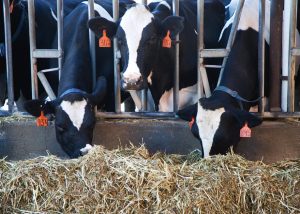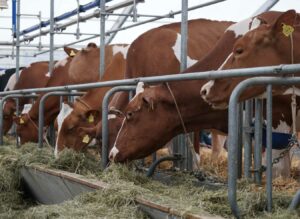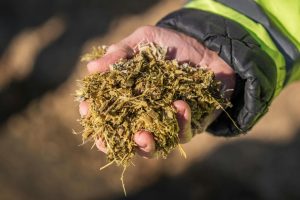Fernando Diaz
Automation
A report entitled “A future that works: Automation, employment, and productivity” published recently by the management consulting firm McKinsey & Company has assessed the technical automation potential of the global economy. Based on data from the US Department of Labor, the authors (Manyika at al., 2017) estimated the technical automation potential of more than 2,000 work activities in more than 800 occupations across the economy.
The activities with highest automation potential were predictable physical activities (81%), processing data (69%), and collecting data (64%). While few occupations can be automated entirely (<5%), about 60% of all occupations have at least 30% activities that could be automated. Automation potential in agriculture was the third in the rank (58%), after accommodation and food services (73%), and manufacturing (60%). In addition, it varied depending on of agricultural activity types: manage (<10%), expertise and interface (20 – 30%), unpredictable physical activities (40 – 50%), process data (70 – 80%), collect data and predictable physical activities (80 – 90%).
Automatic calf feeder
Automated milk feeding systems are becoming very popular in North-American dairy farms. Canadian researchers (Medrano-Galarza et al., 2017) compared feeding management practices between dairy farms using manual (buckets or bottles) and automated milk feeding systems. The study included 670 Canadian dairies (16% automated and 84% manual) that ranged in size from 17 to 2,800 cows (average: 90 cows). The results, published in the Journal of Dairy Science, showed:
- Milk replacer was the main type of milk used among automated farms (89%), whereas only 40% of farms using manual feeding fed milk replacer.
- The volume of milk fed during their first 4 weeks of life was greater in farms with automated feeders (median: 520 vs. 410 lbs.).
- There were no differences between systems in the proportion of farms allowing calves to access starter grain (97%), hay (67%), total-mixed-rations (TMR; 8%) or water (91%).
- However, the proportion of farms allowing ad libitum access to starter, hay, and water was higher among automated farms (86, 93, and 99%) compared with manual systems (70, 66, and 81%).
- Calves fed with automated feeders accessed to starter (median: 3.5 vs. 7 days), hay (7 vs. 15 d), TMR (15 vs. 47), and water (1 vs 7 days) sooner than manual fed calves.
- The weaning process happened sooner (median: 7 vs. 8 weeks) and more gradually (13 vs. 7 days) in automated than in manual fed calves.
Motivation for adopting automatic milk feeding systems
When the producers were asked about the reasons to switch to automated systems, the four most frequent factors were: to raise better calves, offer more milk to calves, reduce labor, and improve working conditions. Similar responses were found among dairy farmers using automated feeders in the Upper Midwest (Endres, 2016). Spending less time on menial tasks, improving calf growth rate, gathering information on calf feeding, performing natural diet changes, and improving labor conditions were the top reasons for purchasing automated systems. Interestingly, reducing the cost of raising calves was not considered a top priority in any of the studies.
Are automatic milk feeding systems economically efficient?
Using the computer model Intuitive Cost of Production Analysis, University of Wisconsin Extension Specialists evaluated the cost of raising dairy replacements in 26 dairies (24 from Wisconsin and 2 from Minnesota) using either individual manual feeding (n=11) or group feeding with an automated system (n=15). In this study, automated fed calves received on average 54 lbs. more of milk replacer (134 vs. 80 lbs.) or 66 lbs. more of whole milk (921 vs. 855 lbs.) than calved fed in the manual system from birth to weaning. Although labor and management costs were $68.7/calf lower in automated systems ($103.74 vs. $172.45/calf), the average total costs were $38/calf lower for manual ($363.7) than for automated fed calves ($401.7). Greater liquid feeding rates coupled with higher housing and equipment costs were the main drivers for the higher costs found in the automated system.
About the author
Fernando Diaz is the Dairy Knowledge Center’s Director. Dr. Diaz works as an independent Dairy Nutrition and Management Consultant. He provides consultation to dairies and feed companies including nutrition and feeding management, forage and crop plans, and research and product development of new feedstuffs, additives and technologies for dairy cows. Fernando lives in Brookings, South Dakota and can be reached at fernando@dairykc.com.
© 2020 Dairy Knowledge Center. All Rights Reserved.









